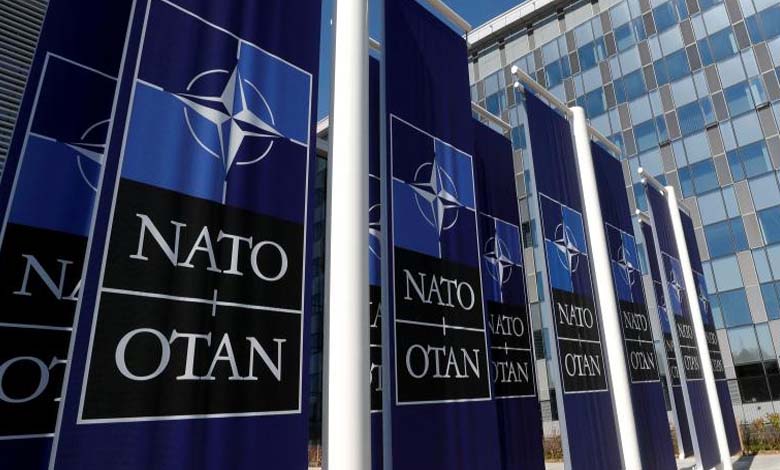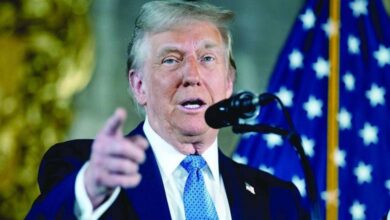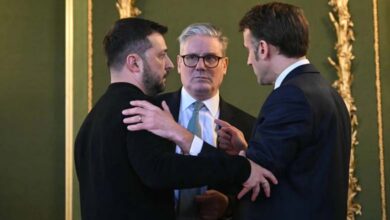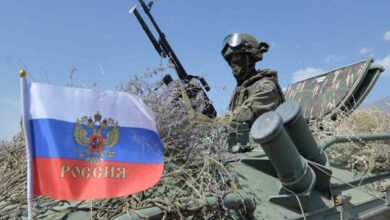After America: Is it Time to Transform NATO into a European Organization?

For decades, American policy toward Europe has remained consistent, with Washington asserting itself on the continent through NATO and acting as the primary guarantor of security in the region, while European countries accepted American leadership.
But today, a majority of the Republican Party is straying from this consensus, opting instead for a policy summarized by Donald Trump‘s comments: “If they don’t pay, we won’t protect them.” In other words, the United States will remain engaged in Europe, but only if European countries pay up.
Democrats, for their part, have deepened their response to this shift. President Joe Biden reaffirmed the Democrats’ “sacred” commitment to European defense, celebrating the acceptance of Finland and Sweden into NATO as a significant achievement for his administration, while Kamala Harris made no mention of a departure from Biden’s position as the Democratic presidential candidate.
According to an analysis by Foreign Affairs, the debate over America’s role in Europe was long overdue, but both parties are wrong in defining the issues and interests at stake. In reality, the United States has the same fundamental interest in Europe today as it did at least since the early 20th century: maintaining the distribution of economic and military power on the continent.
In practice, pursuing this goal meant preventing the emergence of a dominant European power. But unlike the mid-20th century, today’s Europe lacks a would-be dominant contender. Thanks to the success of American efforts after 1945 to rebuild Western Europe and restore its prosperity, it is unlikely that another hegemonic threat will emerge.
The United States needs to recognize that it has achieved its primary goal in Europe. After ensuring that no state could dominate the continent, it should adopt a new approach to dealing with the region.
Under a revised strategy, the United States would reduce its military presence on the continent, give NATO a European dimension, and shift primary responsibility for European security to its rightful owners: the Europeans.
For over 100 years, the United States has had a lasting national interest in Europe: maintaining the distribution of economic and military power on the continent by preventing the emergence of a dominant European power seeking to enhance that power for itself.
During World War I and World War II, Washington intervened to prevent Germany from dominating Europe. The goal of creating NATO in 1949 was to prevent any state from taking control of the continent.
As Secretary of State Dean Acheson noted that year, the two world wars “have taught us that control by a single aggressive and hostile power of Europe would be an intolerable threat to the national security of the United States.”
American support for NATO was reasonable at a time when the Soviet Union threatened to invade the continent, with wartime memories still vivid and Germany’s future uncertain. But even then, Washington’s goal was not to assume permanent responsibility for European security.
NATO was meant to be a temporary means of protecting Western European countries while they recovered after World War II, facilitating Western Europe’s efforts to balance Soviet power, and integrating West Germany into an anti-Soviet alliance that would also help to civilize German power.
By 1951, Dwight Eisenhower – as Supreme Commander of Allied Forces in Europe – noted that “if all U.S. troops stationed in Europe for national defense reasons are not brought home to the United States within ten years, the project will be a failure.”
To achieve this goal, Presidents Harry Truman and Eisenhower sought to create a “third force” among European powers by encouraging France, the United Kingdom, West Germany, and other Western European countries to combine their political, economic, and military resources against the Soviet Union.
Once this third force was established, it would free the United States from the duty of serving as Europe’s first line of defense.
The United States reluctantly accepted a more enduring role in the alliance only when it became clear in the late 1950s and early 1960s that Western European countries were as concerned about Germany as they were about the Soviet Union.
Today, the situation is completely different. For the first time in centuries, Europe lacks a potential dominant power. Concerns about an imperialist Germany have been replaced by worries about Berlin’s struggling geopolitical role, reversing the “German problem.” Other capable powers, such as the United Kingdom and France, recognize that the distribution of power does not favor expansion.
At the same time, Russia lacks the resources and opportunities to launch a hegemonic challenge. With a population of 143 million people, compared to about 600 million in NATO member European countries, Russia lacks the human strength needed to invade Eurasia.
The economies of NATO member European countries are about ten times larger and much more developed than Russia’s.
Even the most pessimistic available estimates show that European NATO members have spent significantly more on defense than Russia, even before the costly military operation in Ukraine and before subsequent increases in European defense spending.
According to the International Institute for Strategic Studies, Russia spent about $75 billion in 2023, while NATO member European countries collectively spent over $374 billion.
There is no doubt that Russia’s military operation in Ukraine has demonstrated its willingness to use force, its evident interest in controlling Ukraine, and its ability to sustain high-intensity operations, but what Russia has not proven is its true ability to impose its military power over long distances.
Not only was Russia’s initial attack on Kyiv repelled, but much of the fighting since has taken place within a few hundred kilometers of the Russian-Ukrainian border, with terrible destruction but no evidence that the military is ready to invade the continent.
If, after more than two years of fighting, Russia is unable to defeat the weaker Ukraine economically and militarily, it does not constitute a hegemonic threat to Europe.
While Russia could certainly attempt to renew its military capabilities, the responses of European countries to the conflict have shown their readiness to address future opportunities for aggression. Today, Russia is merely a shadow of the Soviet threat.
In the absence of any contender for European dominance, there is no longer a need for the United States to play a dominant role in the region.
Without Washington’s leadership, Europe would today be capable of conducting normal international politics, including undoubtedly the possibilities of conflict between states at the ends of the continent, without opening the door to a hegemonic challenge.
Yet Washington refuses to yield. Having eliminated the possibility of a dominant European power emerging, NATO‘s eastward expansion has created new interests concerning weak and vulnerable countries that are difficult to secure.
This creates political pressures on the United States to remain in Europe, on the grounds that Europe is incapable of defending itself.
However, despite all the focus on whether Europe can defend itself, it is strange that “Europe” is rarely defined. Efforts to unify European countries into a larger political entity have had noble goals.
Former French Prime Minister Robert Schuman described the goal as being “to make any war between France and Germany not only unthinkable but materially impossible.”
But despite European integration, the nation-state continues to dominate European politics. France and Latvia are both European countries, but their defense needs—and their importance to the United States—are different.
It is therefore not surprising that Europe may not be able to defend itself easily if small, vulnerable countries bordering Russia are included in the list of countries to defend. It is remarkable that war games over the past decade have strongly suggested that, in the event of conflict with Russia, the United States and its partners would struggle to prevent some of their weakest members from suffering significant damage.
In contrast, if “Europe” means something aligned with traditional American interests—maintaining the distribution of key military and economic zones on the continent—then it becomes less daunting.
Again, the distribution of military and economic power in Europe has changed.
The major European NATO members have long recognized that they must protect the states on the periphery of Europe from Russia.
As in previous periods of European history, Europe is reinventing itself, with national objectives that prepare it to defend its own future independently.
The fact is, as long as European countries remain united, NATO‘s goal of maintaining the distribution of military power in Europe is fundamentally achieved, and it is reasonable for the United States to shift a significant portion of its military presence in Europe to focus on monitoring more global threats.
The United States should not only pursue an outdated strategic objective regarding Europe, focusing on threats from dominant European powers that no longer exist.
Instead, the United States should recognize that it has achieved its primary goal in Europe and reassess its role more appropriately, while allowing NATO to reinvent itself for a new era of cooperation among European members.
For European countries, this transition would involve not only increased military spending but also growing responsibility for maintaining peace and security within the continent. The United States could play an important role in this transition, encouraging European efforts and offering support, but reducing its own military presence to allow Europe to take charge of its own security.
How to Implement the Plan
With growing demands both domestically and in Asia, it’s imperative to correct course. The goal is not to isolate the U.S. from Europe but to transform its role from being the main refuge into a last-resort balancer.
Firstly, the U.S. should start withdrawing some of its troops from Europe, shifting the responsibility for providing the necessary conventional forces to secure Europe onto Europeans themselves.
Currently, the U.S. has around 100,000 soldiers stationed on the continent, with a significant concentration in Germany. A good starting point for this withdrawal would be the additional 20,000 troops that the Biden administration deployed in 2022 following the Russian aggression against Ukraine.
Once these troops are withdrawn, Washington should signal its intention to resume the withdrawal of 12,000 soldiers from Germany, a plan approved by Trump but frozen by Biden.
Organized waves of withdrawal would reinforce this point. Major European powers must ramp up their efforts.
Ultimately, additional U.S. troops and equipment in Europe could be progressively withdrawn, transferring the burden of conventional deterrence needs to Europeans.
Taking these steps now would leverage the evident willingness of Europeans to do more for their own defense since Russia’s invasion of Ukraine.
Germany illustrates this new commitment well. The initial Russian attack was sufficient to shock Germany into canceling the Nord Stream 2 pipeline and announcing plans to invest an additional $108 billion in defense over the next four years under the “turning point.”
Although how Germany has spent that money has prevented the emergence of a serious military force, its leaders have embraced the need to rebuild German capabilities. Some of the country’s most popular elected officials, like Foreign Minister Annalena Baerbock and Defense Minister Boris Pistorius, are proponents of rearmament.
Capable countries like France, Poland, and the UK have also followed a similar path. With American leadership concretely expressed through troop and equipment withdrawals, this process would be accelerated by forcing European nations to take charge of their own defense and cease relying on the U.S.
At the same time, policymakers must acknowledge that Europe cannot quickly fill certain gaps.
In particular, the American nuclear umbrella and its intelligence, surveillance, and reconnaissance capabilities will take a lot of time to replace, even under the best conditions.
Thus, Washington will need to continue supporting Europe in these areas for several years while helping Europe address long-term capability gaps.
Just as the U.S. provides intelligence and target designation support to non-allied countries like Ukraine, it can also reliably commit to providing these services to NATO members even while reducing conventional forces.
This might also include reassessing the U.S. opposition to Germany acquiring nuclear weapons, although it’s unlikely Germany would resort to nuclear weapons in any conceivable scenario.
Washington should also encourage European countries to invest in their defense industrial base, which would offer considerable returns.
A 2021 analysis by Barry Posen, a professor at the Massachusetts Institute of Technology, estimated the financial savings from abandoning the conventional deterrence mission in Europe at around $70 to $80 billion annually.
Given inflation and the additional troops and efforts allocated to Europe since 2022, the savings would be even greater today.
Secondly, to facilitate the increase in European military capabilities, the U.S. must abandon some of its old requirements regarding European armament.
For decades, Washington has insisted that European countries buy American equipment and avoid creating forces that duplicate U.S. forces.
These requirements undermine local support for military investment in Europe and limit the continent’s ability to develop and maintain its own military forces.
Instead of encouraging European countries to purchase American products, Washington should encourage them to invest in their own defense industrial base.
The conditions are favorable for rebuilding Europe’s defense industrial base: the perceived threat is high, the initial steps taken after the Russian aggression against Ukraine have borne fruit, and Europe already produces key weapons such as main battle tanks. Washington should capitalize on these dynamics.
Since new military capabilities take time to develop, adjusting U.S. policy now will help ensure that Europe acquires the local capabilities needed to address continental problems for decades to come.
Furthermore, given the high cost of producing modern military equipment, encouraging European countries to purchase European equipment will create political pressure to increase defense spending in Europe.
Just as concentrated economic benefits from military spending make it difficult for the U.S. to close bases or production lines, economic benefits will similarly influence decisions in Europe.
By encouraging Europe to develop its defense industrial base, Washington can also promote multilateral coordination to enable longer production runs, reduce procurement costs, enhance interoperability, and allow for more effective military and budgetary planning.
When European countries are tasked with taking on daily responsibility for continental security, they will need to bear the full costs of their security choices.
Finally, the U.S. should gradually transform NATO into an alliance led and managed by Europeans.
To start, Washington should encourage European NATO members to create a “European pillar” within NATO, allowing members to formulate common positions on defense and security issues without U.S. involvement.
The U.S. president should clarify that the next Supreme Allied Commander will be European, breaking with the 75-year practice of Americans always holding this position.
The U.S. should reduce its involvement in NATO committees and leave it to allies, for example, to handle political discussions within deputy committees or defense policy and planning committees where consensus on security, political, and organizational issues is formed.
All these steps will clarify that the U.S. expects Europeans to manage the alliance on a day-to-day basis, and Europeans are well-positioned to do so: NATO‘s extensive bureaucratic infrastructure allows it to leverage the cooperation habits acquired by the alliance over its long existence.
U.S. policy does not need to aim for an official withdrawal from NATO or a continuation of membership; it simply needs to clarify that Washington’s role as Europe’s stabilizer is coming to an end, and if European defense planners find this leaves a gap, they will need to fill it themselves.
In reality, the U.S. will be bringing the transatlantic relationship back to its roots. As a naval power, Washington will continue to help maintain the balance but will not seek to dominate the continent itself.
Beyond U.S. interest and resources, a right-sized relationship would also have a beneficial impact on European strategic planning. When European countries are pushed to take on daily responsibility for continental security, they will have to bear the full costs of their security choices.
In an era when policymakers across the continent are pushing ambitious and costly policies—such as adding Ukraine to NATO and potentially engaging directly in the war in Ukraine—transferring responsibility for European security to Europeans will reduce incentives for these countries to pursue reckless policies.
Don’t Let the Crisis Be in Vain
The ideal time to transfer responsibility for Europe to Europeans was right after the collapse of the Soviet Union in 1991, when NATO’s raison d’être had vanished, but the current moment is also appropriate.
It may seem counterintuitive to suggest reducing the U.S. role as Europe’s guardian while the continent faces its biggest war since World War II. However, paradoxically, the costs of the Ukraine conflict and responses to it make strategic adjustment obvious and feasible.
Russian intentions may be aggressive, but its capabilities are limited, and other European countries lack the capability to play an offensive role across the continent.
Ukraine has proven that determined defenders can repel invaders even under unfavorable conditions, and these conditions are conducive for the U.S.
Moreover, Europe’s considerable potential advantage means that Washington will have time to decide whether to adjust its policies accordingly while advancing European defense plans.
Ultimately, it is crucial to recognize that if the U.S. wishes to play a global leadership role, it cannot continue to shoulder a responsibility that others already bear. It must prepare for a more balanced collaboration where Europeans take a more active role in their own defense, thus enabling a more sustainable and reciprocal relationship for the future.
-
Thousands demonstrate in Ukraine against possible Russian invasion
-
Turkey is entering a cycle of conflict between Russia and Ukraine
Loss of European Leadership
Calls for the United States to maintain leadership in Europe overlook the opportunity and direct costs involved, as well as the growing importance of interests that Washington is gaining elsewhere.
The U.S. now faces a $35 trillion debt, an annual budget deficit of $1.5 trillion, increasing challenges in Asia, and evident political divisions that make addressing these challenges more difficult.
-
Crisis in Ukraine: Scenario and date of a possible Russian invasion
-
British Envoy in Moscow to Try to Ease Ukraine Crisis
In the absence of any signs of improved financial conditions or reduced internal pressures, policymakers need to reassess U.S. foreign commitments.
Given that the U.S. has achieved its central goal in Europe, it is time to implement what the architects of its post-war strategy intended. Now is the time to achieve that victory.












